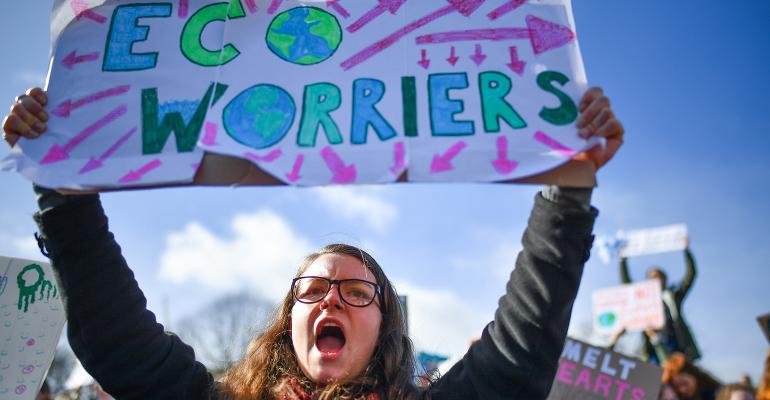I was in high school when the United States observed the first Earth Day in April 1970.
To highlight the day, I wore an M-17 military gas mask in the hallways between classes, until I was assaulted by a teacher, slammed against the lockers and dragged by my collar to the principal’s office. We argued about First Amendment rights, and the principal allowed me to continue to wear the mask that day.
A few weeks ago, the coronavirus pandemic obscured the celebration of Earth Day’s 50th anniversary. The past 50 years haven’t been kind to our planet. Although we’ve made progress in regulating some air, water and other pollutants, the increase in greenhouse gas emissions, primarily from consumption of fossil fuels, has contributed greatly to climate change and a frighteningly warming planet.
The 1.3 million nonprofits in the United States employ 12.3 million people (more than 10% of the U.S. private workforce), with payrolls exceeding those of most other U.S. industries, including construction, transportation and finance. Annually, U.S. nonprofits spend more than $826 billion on salaries, benefits and payroll taxes and nearly $1 trillion on goods and services.
These statistics reveal the actual and potential carbon footprint and climate impact nonprofits can have every day. So, how can donors determine whether the nonprofits they support are doing what they can to mitigate their environmental impact?
Community, family and corporate foundations, as well as donor-advised funds and individual and business donors, can begin by asking questions of their grantees to help them focus on their climate impact. This is the same method grant-makers have been using for years to help nonprofits focus on their diversity, equity and inclusiveness initiatives.
Fourteen Questions
The proposed questions that follow aren’t intended to be a litmus test for funding. Nor are they designed to place additional burdens on nonprofit organizations, especially in this period of enormous financial and operational stress. Rather, they’re a conversation starter to help nonprofits move forward in adapting their operations to be more climate-friendly.
- Does your board have a policy prioritizing reduction of carbon footprint in all operations and programs?
- Have you obtained an energy efficiency audit for your facilities and operations?
- If you have an endowment, are your investments carbon-neutral and climate-friendly?
- Does your organization seek alternatives to travel, such as remote meeting technology? When air travel is required, do you purchase carbon offsets?
- Do you have policies and practices in place to reduce energy, water, paper and other supply use? Do you purchase recycled products when available?
- Have you explored renewable energy resources for your facilities, whether you own or rent?
- Do you use LED lightbulbs and turn off computers, copiers and other electronic equipment when not in use?
- Do you have policies and practices to discourage food waste?
- Do you purchase reusable or compostable products for meetings, meals and events, such as cups, glasses, tableware, etc.?
- Do you have a comprehensive recycling and/or composting program?
- If you have a supply chain, does it have carbon reduction measures in place? Are your own distribution channels fuel- and energy-efficient?
- Do you have incentives to encourage employees to use transportation alternatives such as public transportation, car pools, car sharing, bicycles, electric vehicles, etc.?
- If you operate vehicles, what percent are electric, hybrid or hydrogen-fueled?
- If there’s an individual on your staff who’s responsible for the reduction of the organization’s carbon footprint, does that individual provide periodic reports on carbon footprint improvements?
In addition to their stated missions, nonprofits can play a critical role in responding to climate change. Donors can pose any or all of the questions listed above in an effort to help nonprofits expand their roles in protecting the planet.
Bruce DeBoskey founded The DeBoskey Group in 2010 to help individuals and families, businesses and foundations organize, strategize, evaluate and maximize the impact of their philanthropic initiatives.





